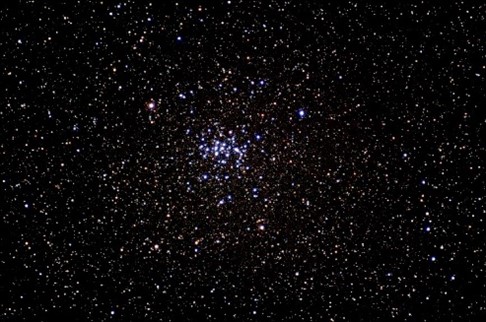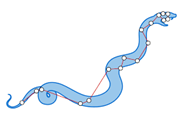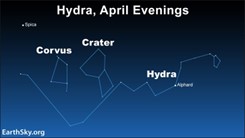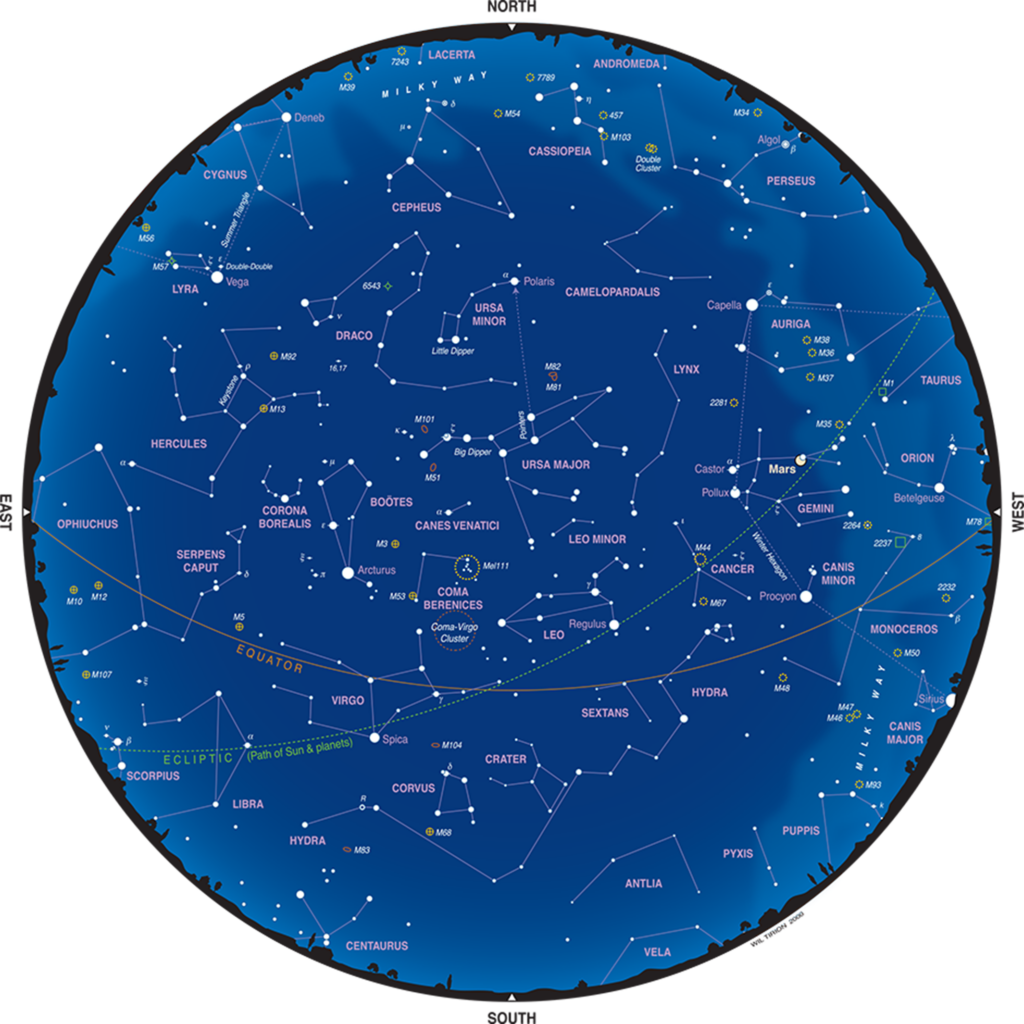April is another good month to see bright stars in bright constellations. Leo the Lion is now front and center, due south after dusk is over. Orion and Gemini are still visible, but first Orion and then Gemini will be setting early in the night in the west.
A favorite sight that is easily visible in binoculars is the “Beehive Star Cluster” in the constellation of Cancer. Find the head of Leo and then move your binocs a few degrees to the west—you’ll see the Beehive! (see below photo). The Beehive contains 1,000 stars and is about 500 light years distant from us (each light year is 6 trillion miles!). In 1609, Galileo used his small “first telescope” to look at the Beehive and was able to identify 40 stars. A fun fact: We always call Galileo by his first name, although most famous people are called by their last names (except for Galileo, Elvis, and a few others!).
The head of Hydra, the monster, is located in the sky below the torso of Leo the Lion . Use the below star chart to find Leo and then you can find Hydra’s head below Leo. Hydra is the very largest constellation (we have 88 constellations in total), although from our latitude, it’s hard to see much of it except for the top part. Plus, it’s stars are dim—it’s brightest is only 2nd magnitude, the same brightness as Polaris, the North Star. Hydra is a mythological figure comprised of a snake, a lion, and a bird—but it looks mostly like a snake!



- Late evening of April 9th: If you look hard you will see that the moon is only ½-degree away from Antares, the brightest star in the constellation of Scorpius. Antares is a “red giant,” with a diameter the size of the orbit of Mars!
- April 10th & 11th: Venus is positioned very close the Pleiades star cluster.
- Late night of 22nd and early morning of the 23rd: The Lyrid meteor shower can put on a display of lots of meteors, but typically they are faint and require a dark site. As always with meteor observing, it’s best to do so as late in the night as possible. And the very best is about 4:00 AM when it’s still dark outside, because at that time, your position on earth is rotating into the arriving meteors!

